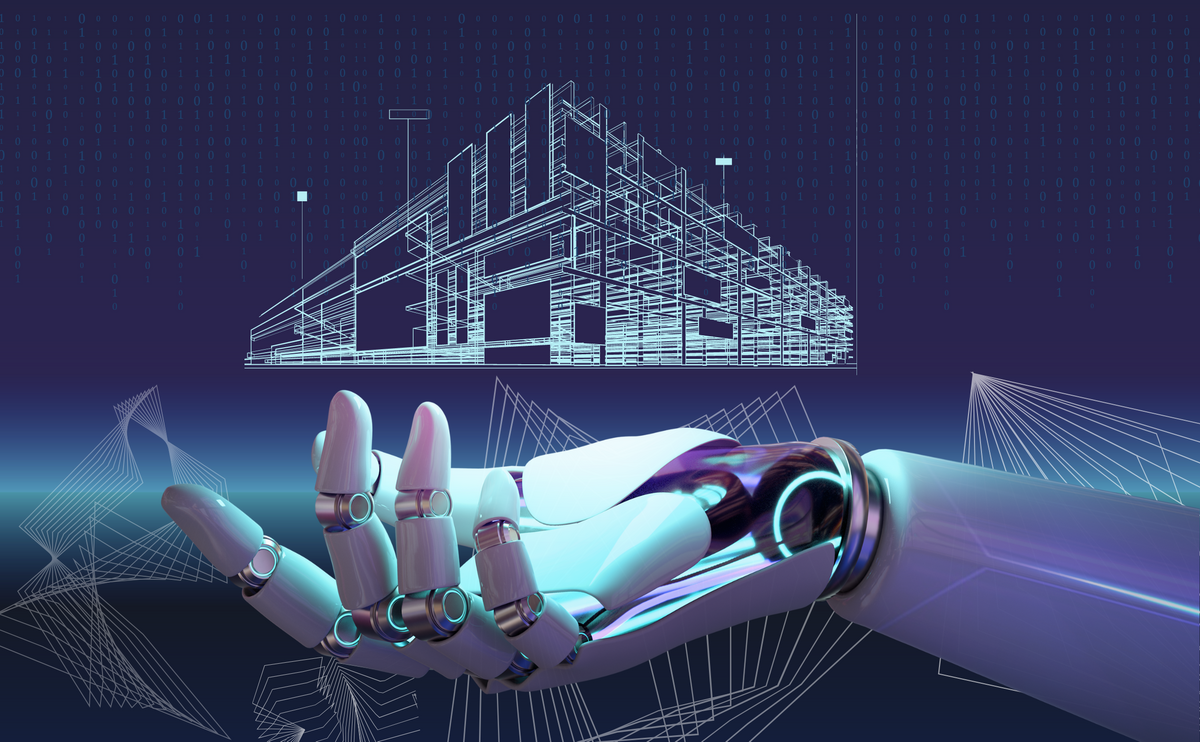AI & architecture, where to? Interviewing the machina

We live in an era of technological grandiosity, where Science fiction is a liveable experience.
The rapid technological development that we live in made space for unlimited imagination of what humans can do with machine assistance. The vulgarization of artificial intelligence and its use caused a distinguishable change in our reality. It’s the modern and optimized Magic 8 Ball toy that has answers for all. Although, this shift generated two main reactions: aspiration and concern about what might be.
Like almost every other discipline, architecture is not exempt from the equation. The premises of AI contribution are already showing, with the impeccable accuracy of simulation software and intelligent design systems, the main question on everyone’s mind now is, what next? To answer it, we should consider the inclusion of the machina itself in the discussion.
How can AI contribute?
From planning, to design and throughout realization. AI can accompany us through the whole creation process. It has proven its efficiency in cutting down time and building expenses by assisting with the decision-making regarding the best practices and materials.
The use of AI-based programs made it easier to project into the life-cycle of the building even before its concretization. It allows us to study its resilience to weather conditions, energetic efficiency, and impact on the immediate environment.
And it’s not just about future designs and buildings. The use of AI has and will continue to revolutionize the field of Architectural Heritage studies. It generates seemingly accurate models of historical buildings out of the remaining ruins, providing more context for future renovations.
Can AI take over?
The peak of AI has raised several concerns regarding the future of many jobs and positions—such as proofreaders, accountants, cashiers, etc. Fearfully, these latter could one day be replaced and automated.
“Is architecture immune to this?” we should ask ourselves. It is proven that AI can do a lot to architecture, but can it do everything? What is it that only an architect can do? To inspect that, we must understand the architect’s role as a chef-d'œuvre, an artist: responsible for shaping our built environment by creating spaces that are comfortable, secure, and relatable.
Can AI be creative?
On a more philosophical level, the architect’s role is not solely to build but to conceptualize and “create.” It is the use of space to create meaning. Being creative exceeds the aesthetical aspect. For architecture, it’s about the genius loci and overall ambiance that a building evokes.
But is this genius of space of the architect’s doing? or is it a result of several logical factors which would make it attainable by the machine?
If creativity and space relevance in architecture is a sum of a rational reasoning process, then we could see architectural projects that are completely designed and created by intelligent artificial entities.
Are we there yet?
This huge and rapid technological development we are witnessing is a notion changer. What we once called science fiction is now attainable. Which brings immense aspirations and responsibilities for the future.
In the field of architecture, the same principle applies. It is important to understand the potential of AI assistance and the change it could implement to the notions of architecture and the role of an architect.
Architecture for space
Human expansionist ambitions in space impose the use of technology and notably artificial intelligence. Humans' experience building and designing outside the earth's sphere is almost inexistent. Thus, the use of AI would fasten the process of familiarity with new environments by processing enormous amounts of data (climate, landforms, gravity, etc) and providing proper simulations of the extracted results.
From the future: the cyborg-architect
The future is the architect and AI working together for better results and space satisfaction. The nature of this collaboration is yet to be defined and structured. This communion could be the architect harnessing the machine for its interests or them thinking together as equal intelligent entities, maybe even using the same vessel.
Using biohacking to optimize the body’s organism through the integration of technology—such as 3D visualizers and augmented virtual reality systems—would allow the instant rendering of ideas from the brain. The implementation of fast computing systems would allow the architect to process enormous amounts of data through the machine and onto the brain for well-thought decision-making.
Flying cars, space settlements, and hybrid mechanical humans. These are no longer images of fiction but plans for the future. Would humans outsmart themselves by creating a conscious entity that’s smarter than them? And would that create a new power quarrel? Nevertheless, the world tends to focus on the results of this development and neglects any moral prospects or philosophy.
The forethought of AI philosophy (like in all other fields) could help direct us toward asking the right questions about what we need and how far we are willing to go. Despite the great opportunities that AI could bring to architecture, the human’s touch is primordial as He’s the primary user of the designed space. This puts more responsibility on the architect as not only the space conceiver but also the AI harnesser for a better human spatial experience.